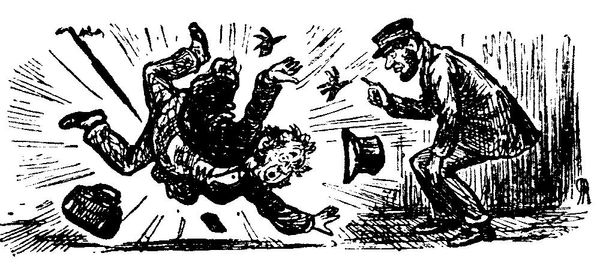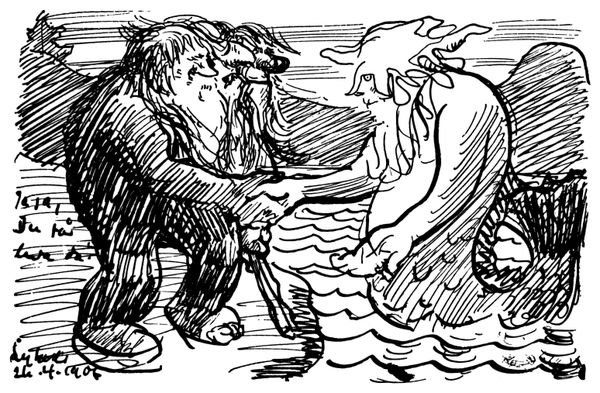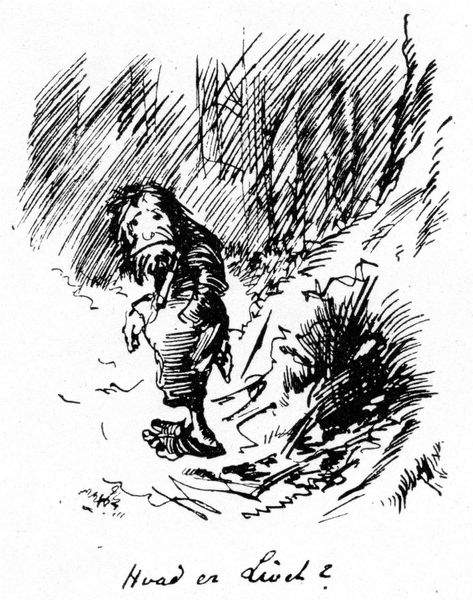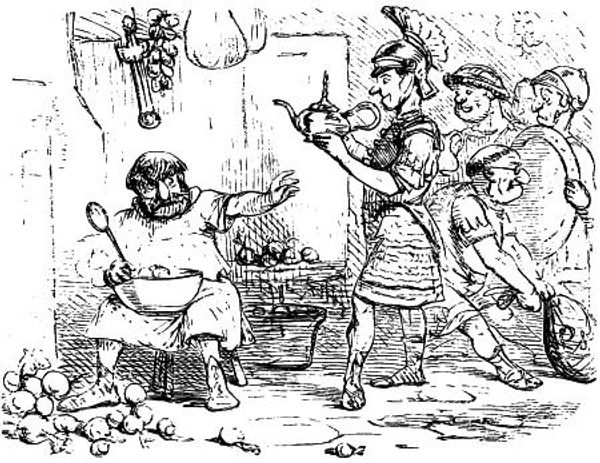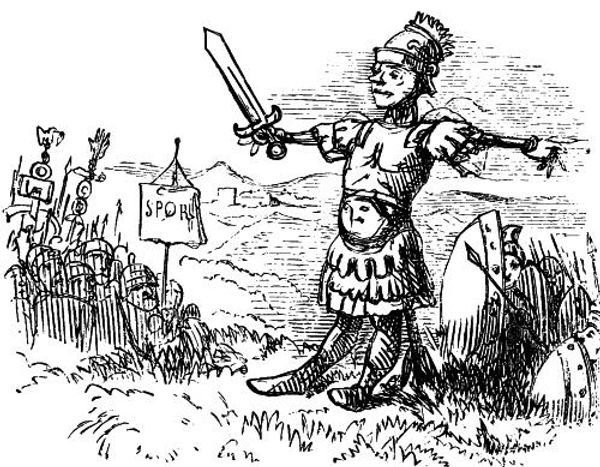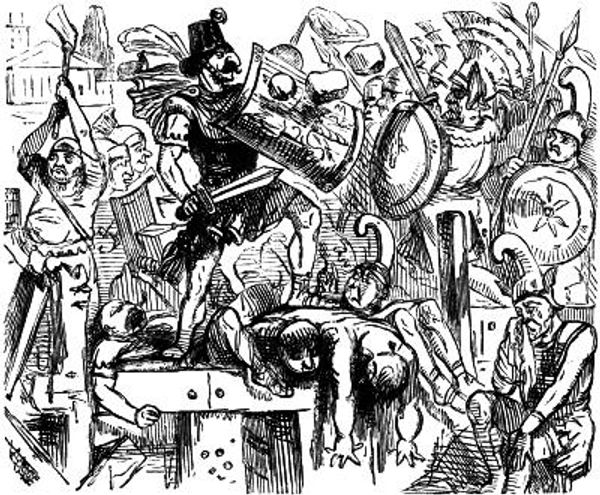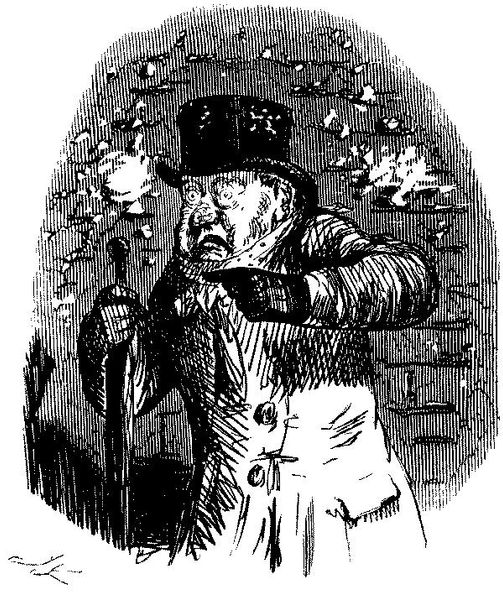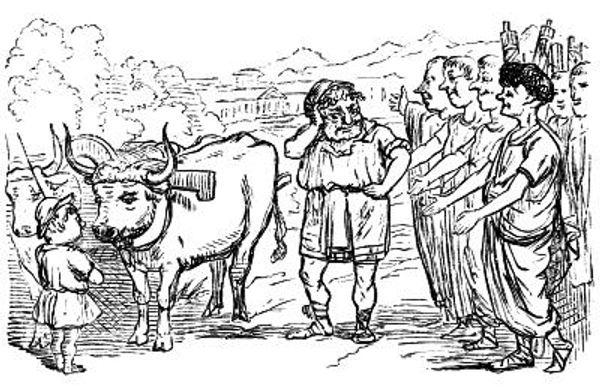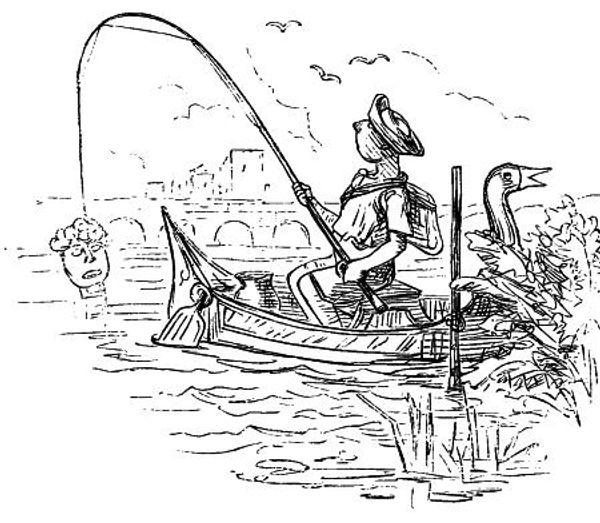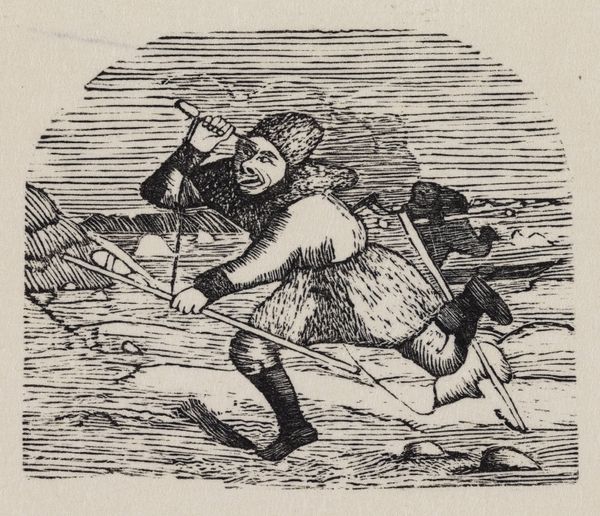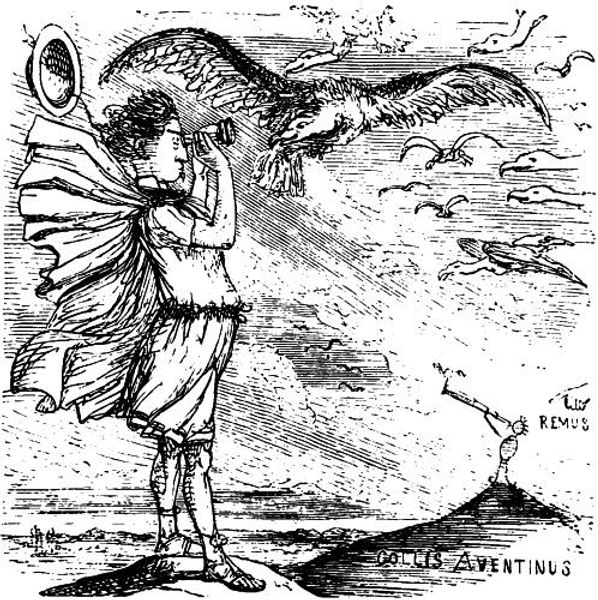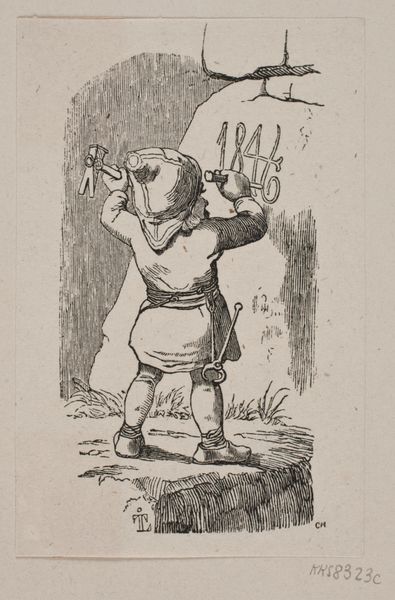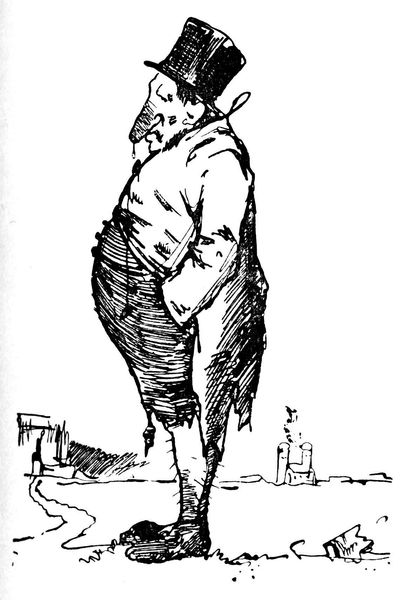
drawing, ink, pen
#
drawing
#
comic strip sketch
#
mechanical pen drawing
#
pen illustration
#
book
#
caricature
#
line drawing illustration
#
junji ito style
#
figuration
#
ink line art
#
linework heavy
#
ink
#
sketchwork
#
sketch
#
thin linework
#
line
#
pen
#
storyboard and sketchbook work
Copyright: Public domain
Curator: This engaging pen and ink drawing is titled "The Evil Conscience of Tarquin," attributed to John Leech. Editor: Immediately striking! The stark contrast of the lines and the bulging eyes of the figure really convey a sense of fear and… absurdity, simultaneously. Curator: Leech was known for his satirical cartoons and illustrations, often appearing in "Punch" magazine. This drawing, in its rather rough sketch-like quality, provides insight into the popular imagery of the Victorian era and their fascination with historical and moral subjects. Editor: The snake, or rather a series of connected, monstrous faces writhing in the grass, has immense symbolic weight. Serpents traditionally embody temptation, deceit, and the hidden dangers of unchecked desires. Given the title, this visual representation seems very fitting. It suggests the internal turmoil of Tarquin. Curator: Indeed. Tarquin, as in, the infamous Roman tyrant, Tarquinius Superbus. The choice of this specific historical figure offers us an insight into the 19th-century public understanding of historical evil, possibly drawing parallels with contemporary political figures or social anxieties. Editor: Note how Tarquin is dressed; that almost farcical crown and layered skirt don’t align with an ideal of regal dignity. Could this be an artist pointing towards abuse of power, made tangible with his choice of mocking apparel and panicked posture? Curator: Very possibly. Consider the political climate in England at the time; Leech frequently commented on authority figures, sometimes quite directly, other times using allegories like this one to offer social criticism under the guise of historical narrative. The grotesque serpent and terrified reaction suggest moral condemnation. Editor: The serpent, multiplied like that, takes on an almost Kafkaesque quality. It reflects how guilt and fear can manifest not as a single entity, but as an overwhelming, ever-present force that erodes one’s sanity. Curator: It shows us how anxieties concerning morality were both widespread and marketable in Victorian society, through artwork that critiqued, entertained, and enforced shared values. Editor: The imagery leaves you with this potent reminder of how we must confront the lurking serpents of conscience within. Fascinating how it can translate through time.
Comments
No comments
Be the first to comment and join the conversation on the ultimate creative platform.
